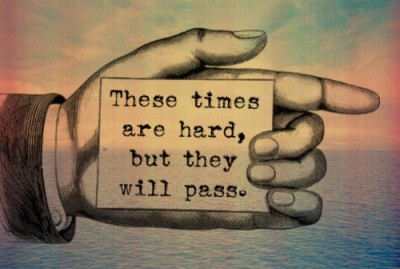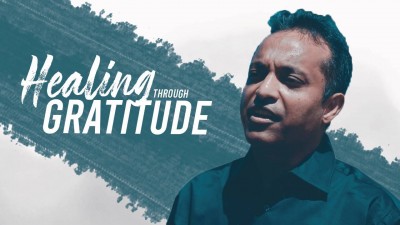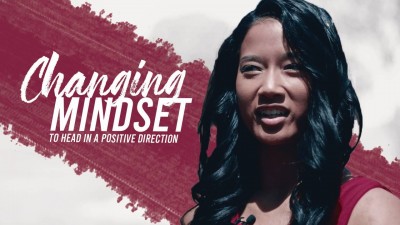What is love? That is a question which has been asked repeatedly down through the centuries, with various answers presented in a variety of artistic media, including books. I have addressed this question in my own book, 10 Steps to a Great Relationship: What Every Couple Should Know About Love.
So, what are the steps and what should we all know about love?
I think it is important to clarify what exactly is meant by love. There are many forms, but even romantic love can be a confusing term. We need to reconsider the notion and experience of, “falling in love”. I describe this heady phase of a relationship as a Novel Erotic Attachment, or NEA. During this phase, the primitive mechanisms that draw people together to procreate, are kicked into high gear. In the brain, pleasure chemicals like dopamine and oxytocin, flood the neural circuits, leading to feelings of euphoria and connection, as well as a strong sexual urge. This phase, the NEA, is characterised by novelty, eroticism and the urge for sex, and attachment.
However, the NEA can only last so long, especially as novelty —one of the drivers of this phase — can’t be maintained forever. Indeed, this NEA phase typically lasts about six months.
During this phase, your brain is dictating your thoughts and behaviours, through the powerful neurochemicals mentioned earlier. These thoughts and feelings are often so overwhelming that they can destroy rational thought and massively influence perception. In this phase, your partner is the most wonderful person in the world, your soulmate for sure. They can do no wrong, or more accurately you won’t even see, let alone admit to yourself, any questionable behaviour.
In this phase it is very difficult not to be, “in love”, because your brain has switched on the necessary systems that drive the irrational behaviour.
However, this isn’t, “real” love. It’s a temporary illusion from which there’s no escape. Real love requires much greater effort because it is not being driven by brain physiology and pleasure chemicals. And with that, here are 10 attributes that I believe, constitute a great relationship. These attributes are inter-related, meaning all must be worked on for a successful relationship.
Communication
Without the ability to communicate, nothing will be resolved. Fundamental aspects of a relationship, like the sharing of personal details — from emotions to personal narratives and perceptions — depend on adequate communication. When there are such communication variables as gender differences, cultural influences and personal perception, it is very easy, if not the norm, for people to misinterpret their partner’s behaviours, emotions and intentions.
Because such misinterpretation is so common, partners have to consciously work on developing an effective communication system. Each person brings their own communication styles, as well as their own thoughts, beliefs, opinions and issues to a relationship, so while finding a way for both partners to be heard is key, such mutual communication skills are rarely taught while growing up, and so we are left as adults to figure it out for ourselves.
Creating the right communication environment is essential. Partners need to feel that they can express themselves without interruption, censure, criticism, or judgment. Without that trust, communication will be inauthentic, leading to significant issues. This leads to the next key step…
Acceptance
There are several things that one has to accept when living together:
- You have little or no control over your partner.
- You and your partner will both change over time.
- Neither of you are perfect.
- You always have some responsibility for the state of your relationship.
- You and your partner are different.
- You cannot fight over every disagreement.
- The excitement of the NEA won’t be repeated.
- Your relationship is a growing, organic, evolving entity.
A functioning relationship will have several gains for both partners, like: intimacy, friendship, companionship, financial and emotional security, family, support, and opportunity. However, to realize these benefits, a couple must work as a team.
Commitment
Continuing the notion of teamwork, I propose that commitment is a necessary attribute of a great relationship. Both parties have to be committed to work together. Nothing else works.
Some people have difficulty making such a total commitment. They can feel vulnerable for all sorts of reasons, the most common of which is that when they have made commitments in the past (typically in their family of origin), they have been taken advantage of.
Commitment requires someone to be physically and emotionally available and authentic. Difficulties doing that could be a matter of mistrust, which sometimes results in a partner saying they are totally committed when they aren’t. They might, for example, agree to a joint decision but then find reasons for backing out of the agreement. This is related to the next important step: trust.
Trust
The ability to trust, and the ability to be trustworthy, is critical. When trust is established it leads to reliability and security.
Some people do not easily inspire trust. There are three broad reasons for a partner’s untrustworthiness.
- Poor impulse control, which can lead to reckless and thoughtless violations.
- Psychopathy, in which people don’t care whether they are trustworthy or not.
- People-pleasers, who go overboard in their efforts to please their partners, often sacrificing themselves in the process.
All of these three Ps are potentially relationship breakers and need to be addressed, generally with the help of a professional. They typically lead to anger, alienation and withdrawal. However, even the most balanced person is imperfect, so what happens when a partner violates trust?
I have found six ways to restore trust:
- Stop the behaviour
- Be open and honest
- Forgiveness and the recognition that the restoration of trust will take time
- Apologize
- Empathize with the partner’s hurt
- Make amends
Doing activities together is also important because it leads to another of the 10 requirements.
Sharing
Sharing activities, be they household chores or incredible vacations, is essential for developing teamwork. Such sharing represents unconditional giving, which should be highly valued, not only by the recipient, but also the provider. This complementary activity helps strengthen bonds, neurologically as well as psychologically. Being helpful typically arouses in the person being helped a neurological response that, while not as powerful as the NEA, will bring people together.
This reciprocity is one of the main drivers of connection. When used appropriately it can significantly enhance a relationship.
Some of the great things that are shared in a great relationship: time, money, possessions, family, friends, power, secrets, experiences, dreams.
There is a lot of evidence that sharing in this manner is beneficial to health because connection is critical for human beings (and probably most other living species).
In order to share not only must you be able to give, but also to receive. Some people have difficulty receiving either out of mistrust or low self-image, and that can really sabotage the critical process of sharing.
Problem Solving
Problems and differences emerge in a relationship. If they don’t there’s typically something wrong; usually one person has all the control.
There are two important questions that need to be answered in any argument or difference of opinion.
- Do you want to be right or happy?
- What’s the argument really about?
In many therapy sessions with couples, I found that the couples hadn’t identified what the issue was really about. In many cases, it turns out that the underlying dispute was about control. If communication isn’t good, trust is low, then the real reason for someone’s anger and resentment may stay hidden from view. Again, a professional may be needed to get to the bottom of the issue.
Here are 11 tactics to increase the chances of successful resolution.
- No physical violence
- Call time-out
- Be careful what you say
- Don’t dredge up ancient history
- Try to resolve within each of yourselves
- Argue in private
- Apologize if you have crossed the boundary
- Don’t argue late at night
- Know when you partner is ready for the fight to be over
- Negotiate an outcome where both parties can save face
- Avoid projection and interpretation
Nurturing
A strong bond is formed when partners help each other meet their needs, similar to the mechanisms that are at work when sharing effectively, as described earlier.
Any connection is strengthened with emotional availability and support. Know your partner’s dreams and goals and support them.
Romancing
While the NEA can’t be replicated, (the nature of novelty being a one-off), romantic actions can still kindle warm feelings and strengthen relationships. Romancing requires extra special, thoughtful, and often unexpected, attention.
While such attention can manifest in activities like special trips, here are some simple tips for everyday romancing: surprise gifts, flowers, thank you notes, dates and playing together.
These are all stepping-stones to real intimacy.
Forgiveness
Forgiveness is critical in any meaningful relationship. When you share your life with someone it is highly likely there will be times when both partners will do something stupid and potentially damaging. These are make-or-break times for a relationship. In the section above it was pointed out that the transgressing partner must acknowledge their failure and take full responsibility. They must understand the hurt that they have caused and feel genuinely sorry, and offer to make amends. And they must agree not to repeat the behaviour.
Under these conditions, forgiveness is much more possible and likely. Without them, forgiveness is unlikely. Forgiveness isn’t a free pass, neither is it tolerance of an unacceptable behaviour. It is a response to where the transgressor is in the present.
Understanding
Relationships are a challenge and a huge way to discover who we really are. With the appropriate mindset, and all of the preceding attributes in place, a great relationship can help each partner discover who they really are and in particular, their meaning and purpose. This understanding combined with the attributes above allow a great relationship to make both partners the best they can be.
Photo by Everoton Vila on Unsplash.






























